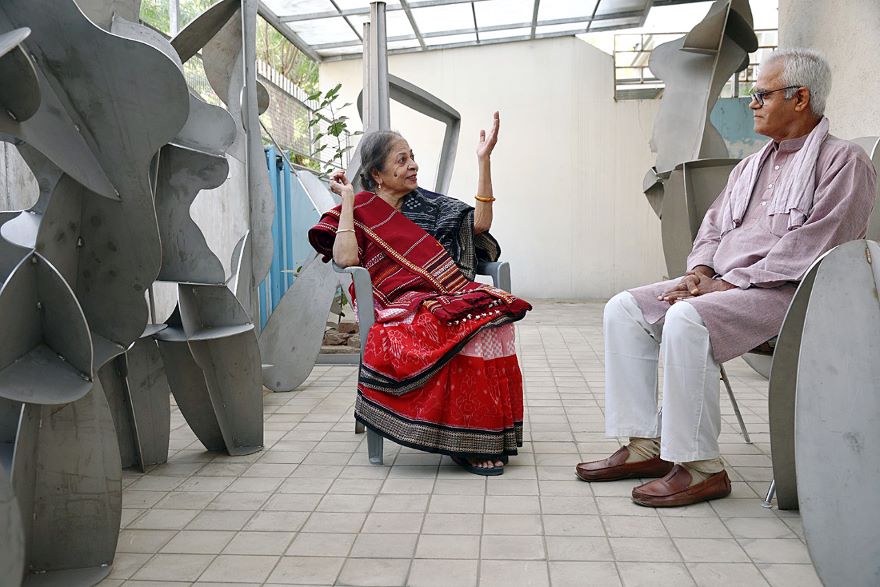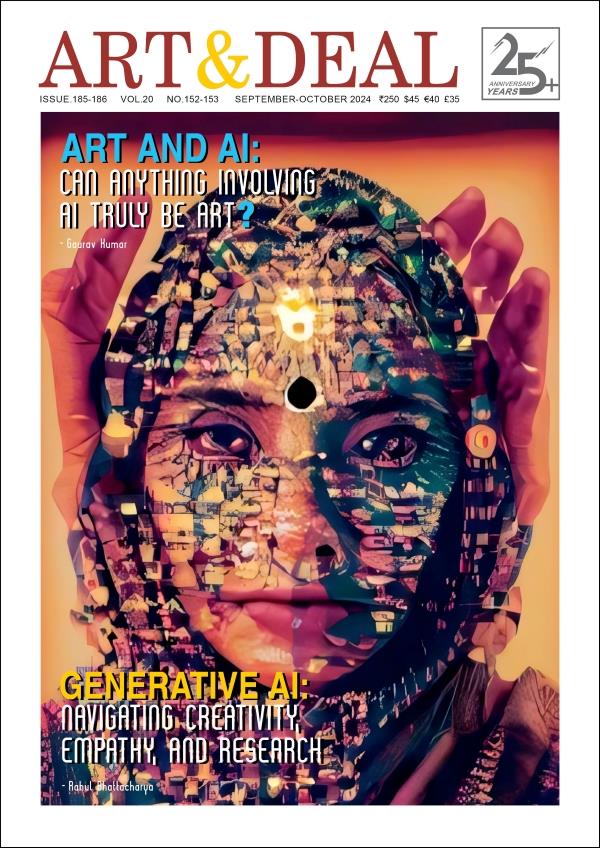Dhruva Mistry in conversation with Sumati Gangopadhyaya
Sumati Gangopadhyaya (SG): Do you recall your earliest love for art forms? Can you elaborate?
Dhruva Mistry (DM): At home, my mother made naïve drawings on the floor to keep us children busy. In the late 1950s, my kindergarten was quite close to a vocational training school where my father was the superintendent in Bhavnagar. I recall cutting coloured paper with a pair of scissors. My brother and I would go to the workshop to go home with our dad. Once I was looking at a student forging a red hot iron ring and it slipped off the anvil and tongs before hitting my bare foot. My curiosity to see things through trial and error ways has continued, and so has my love for learning. I liked insects, birds, and animals, and played with cactus leaves, thorns, twigs, and fruits by seeing creatures of imagination in things. I played with Bajra reeds by using the thin slivers of their outer shell and used pieces of the crunchy and softer core to make the skeletal structure of spectacles and other things.

There was little awareness of either Art or Form as individual expressions in my childhood. Functional and practical interests dominated the semi-rural life in my village. It was closer to Vallabh Vidhyanagar, a new educational town about 10 miles away. Sardar Patel, an architect of India, was born in the next village. I liked to watch my father draw with an engineering compass using paper, pencils, and ink on a drawing board. I played with paper, cards, and glue and found objects to make small motor vehicles. There was a carpenter’s workshop across the road, a blacksmith during the monsoon months, and potters on the street. At times, I saw cobblers and repairers of kitchen utensils and umbrellas at work there. I saw images of gods and Nandi in the temples
SG: How would you describe the journey of your core concepts, the germination of a seed idea and its magical transformation into a tangible work of art (Example with Images)
DM: My interest in the quality of form, economy of materials and scale remains close to my heart. It is a gradual process of development of ideas and conceptual clarity. However ordinary, mundane and simple, ideas as well as forms offer glimpses of the real in life. As a maker, Ideas of Sitting Bull (1983), Creature (1982), Little Bird (1984), Reguarding Guardians (1984), and Little B in stainless steel, which began in 2005, are part of my curiosity to know and understand forms, materials and skills. I like to re-create enigmas of images as forms of expression.

I made a pair of Heads (1976) with a beaten steel sheet and worked with scrap metal. After designing the large Object in 1995, I have preferred non-rusting stainless steel for cold winters, hot summers, and wet monsoons apart from air and environmental pollution. Conceiving sculptural images and transforming them into enduring forms remains a kind of jigsaw puzzle by imagining, drawing and laser cutting shapes to be fitted and welded well together. My interest in the figure as a form is an abstract sculptural quest through the use of materials, skills, resources and depth of engagement over a period of time to realise the form. The work as an imprint of sensibility makes the impossible look probable, actual, and a tangibly believable reflection of experience.

SG: What are your views on traditional sculptors as idol makers, terracotta sculptors, and ancient murals, in terms of their aesthetic and historical values? Are some of these traditional techniques worth relearning; are they relevant and useful today for contemporary modern sculptors?
DM: Ancient Indian art and cultural heritage offer a great variety of visual and craft traditions ranging from primitive, tribal, folk and classical to urbane experimentations. Self-awareness of being in the present helps to distinguish forms of intent and reason in an ever-alienating and polarising reality of the world. A variety of interests and practices arouse curiosity in all kinds of people. To learn about traditional techniques, their use of forms, motifs, images, and materials reveal the evolution of cultural intentions and needs that motivate a variety of learners, artists, admirers and people.
Read More>> Please Subscribe our Physical Magazine
